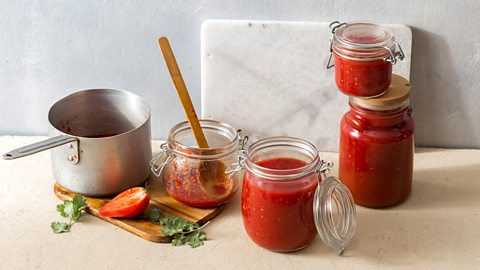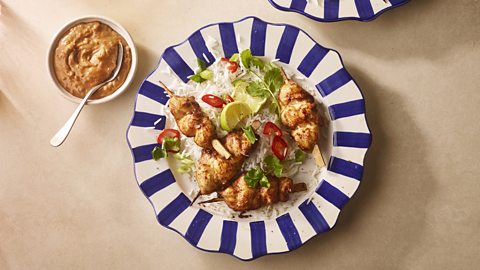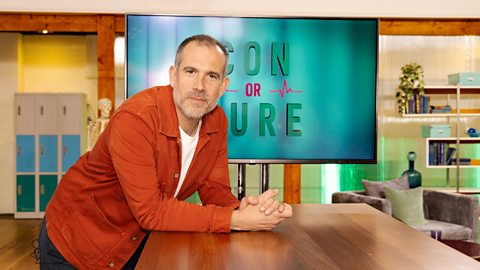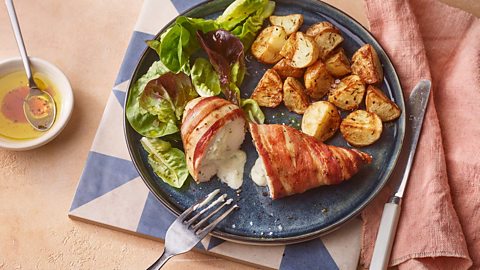Are plastic storage containers safe for food?
We use plastic tubs for everything from taking our sandwiches to work to storing food in the freezer and reheating leftovers in the microwave. But are they safe and should we be looking for alternatives?
By Sue Quinn
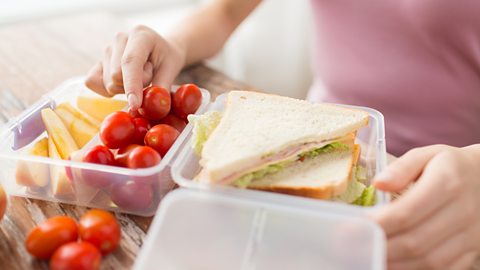
For many of us, plastic containers are part of our daily lives; we use them to store, freeze, heat and transport a variety of different foods. But some scientists are concerned that the chemicals in plastic have the potential to damage our health.
Studies have shown that some of the thousands of substances used to make plastic products can ‘leach’ or ‘migrate’ into the food and drinks we consume. But manufacturers and food safety authorities say the levels are so low they pose no risk to human health.
Regulations set out by the Food Standards Agency (FSA) state what substances can and can’t be used in plastic that comes into contact with food. Under these rules, it’s unlawful for manufacturers to use materials that release chemicals into food at harmful levels.
Manufacturers must also consider the circumstances in which the plastic might be used, including the temperature of the food, the type of food and storage times. According to the FSA, manufacturers must be able to prove they’ve tested the products and that they comply with the law.
However, some scientists argue these rules are not enforced, and say there’s a lack of data to back up claims that plastic food containers don’t pose a risk to our health, particularly when used to store hot food or heat food in.
Related stories
Lack of data
According to the British Plastics Federation (BPF), one of the most common types of plastics used in food packaging is polypropylene (it can be found in everything from crisp packets to biscuit wrappers). Takeaway food containers, which many of us keep and re-use, tend to be made from this or another type of plastic called polyethylene – or both.
But many other chemicals are added during manufacturing too, such as colourants or substances to make the containers flexible.
“The chemical composition of plastics is incredibly complex,” says Dr Jane Muncke, managing director and chief scientific officer at the Food Packaging Forum, a Switzerland-based not-for-profit organisation.
Not only do the chemicals change as they react with each other during manufacturing, but unknown components end up in the mix too. These are referred to as non-intentionally added substances (NIAS).
It’s not disputed that certain chemicals migrate out of plastic into food and drinks, and some are absorbed by our bodies. “We also know that certain types of food can lead to higher chemical transfer,” Dr Muncke says.
For example, acidic foods (such as tomato sauce) or fatty ones (like lasagne) are prone to absorbing more chemicals from plastic containers than others. “The transfer is also higher with hot foods. This means you might absorb a higher dose of chemicals by microwaving food in a plastic container than you would when using the same container to store salad.”
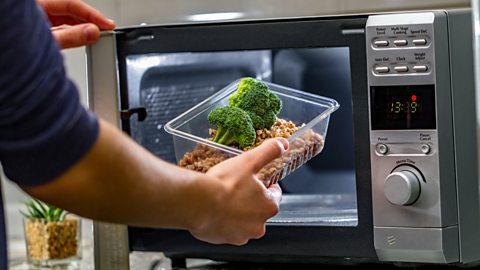
In 2022, a group of scientists published a list of 388 ‘chemicals of concern’ that may be used in products which come into contact with food. Chemicals of concern are substances considered hazardous because of their potential ability to cause cancer or damage our health in other ways, or that break down into tiny particles that travel through and accumulate in the environment.
Of the 388 ‘food contact chemicals of concern’ named, 197 are known to be used in the manufacture of plastics that come into contact with food, including food packaging, food storage containers, tableware and many other items. There is evidence that many of those chemicals do transfer into foodstuffs.
“This doesn’t necessarily mean that daily exposure to any of these chemicals will give you cancer or other health conditions,” Dr Muncke says. “But it does increase the risk of developing chronic diseases when compared to not being exposed to such chemicals on a daily basis.”
Recipes to batch cook and reheat in a pan
Chemicals of concern
According to Harvard Medical School experts, several chemicals in plastic are “worrisome”, even if we’re exposed to tiny amounts at a time. “Their effects may add up, leading to a variety of adverse health outcomes down the road,” Dr Russ Hauser writes on the Harvard Medical School website. “Furthermore, and most importantly, we are exposed to many chemicals simultaneously (for example, chemical mixtures) that may have additive adverse effects”.
Two chemicals found in plastic are particularly controversial: phthalates (used to soften plastics) and bisphenol A, commonly referred to as BPA (used to make very hard plastic). Both are known as endocrine disruptors, which means they interfere with the body’s hormones and can potentially affect an array of biological processes such as normal growth, fertility and reproduction.
Recently, the European Food Safety Authority (EFSA) reviewed the evidence about BPA and confirmed it was a health risk. As a result, it significantly reduced the tolerable daily intake (TDI) – the amount that can be ingested daily over a lifetime without risking health. The new TDI is 20,000 times lower than it was before the review.
In the UK, BPA cannot be included in items intended for use by infants and young children, such as feeding bottles and beakers. The FSA and the government’s independent Committee on Toxicity of Chemicals in Food, Consumer Products and the Environment (COT) are currently reviewing the latest evidence on BPA.
The British Plastics Federation says plastic food containers made from polypropylene or polyethylene, or a mix of both, “generally” don’t contain BPA or phthalates.
Err on the side of caution
So, if we want to avoid any chemicals leaching into our food, what are the best containers to use?
“Part of the problem is that the composition of plastics is changing all the time,” says Dr Diana Zuckerman, president of the National Centre for Health Research in Washington. “Like most people, I have a kitchen filled with old plastic containers and I have no idea what’s in them.”
Whichever chemicals they contain, plastics break down over time and can potentially release trace amounts into food. “This is more likely to happen when the plastic has been heated or when it’s old and has been repeatedly used and washed,” she says.
Given the gaps in knowledge about the chemicals in plastic and the extent to which they can leach into food, Dr Zuckerman suggests opting for glass or ceramic containers, especially for hot food and for heating food in a microwave.
“When the manufacturer states that a container is microwave safe, that just means it won’t melt,” Dr Zuckerman says. “I never heat anything in plastic – I put it in a glass or Pyrex container and cover the food with a paper towel or plate. That’s what I recommend everybody else do.”
Microwave meals you can make in mugs and bowls
The Academy of Nutrition and Dietetics in the US, the world’s largest organisation of food and nutrition professionals, advises consumers to only use plastic containers to store cold food.
Most plastic food containers have a triangle on the bottom containing a number from one to seven, which identifies the type of plastic used to make it. The Academy says the safest choices for food use are numbers one, two, four and five. The American Academy of Paediatrics recommends avoiding plastic containers with codes three, six and seven.
A spokesman for the BPF said any plastic product approved for contact with food has to meet the “very stringent” standards of the FSA. He said non-intentionally added substances (NIAS) were usually only found in recycled plastics, but that “currently, recycled polypropylene or polyethylene are not approved for direct food contact (except for recycled polyethylene milk bottles), so this should not be an issue.”
Not all experts agree about the health risks plastic containers pose. Dr Rachel Orritt from Cancer Research UK says there’s a lack of evidence that using plastics causes cancer. “This includes drinking from plastic bottles and using plastic containers and bags to store food in,” she says. “Even if food is heated in these containers for hours at a time, they will not increase cancer risk.”
Originally published January 2024
